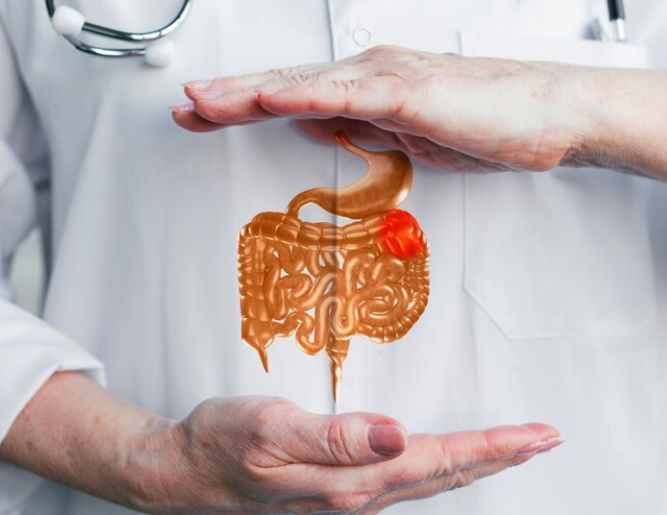What Is Sigmoidoscopy?
Sigmoidoscopy is a medical procedure that allows a gastroenterologist to examine the lower part of the colon, specifically the sigmoid colon and rectum. Your colon helps your body absorb water and nutrients from the food you eat. It’s also where your stool is formed. The last third of your descending colon is called the sigmoid colon. It’s connected to your anus by your rectum. The purpose of a colonoscopy is to examine the entire colon. But sometimes only the sigmoid colon warrants close inspection. This is when your doctor will recommend a sigmoidoscopy. If you are looking for a Sigmoidoscopy Treatment in Rasta Peth Pune then the Digestive Endoscopy Clinic can be a great option for you.
A sigmoidoscopy is done with a device called a sigmoidoscope. Dr. Suresh Jain is one of the best gastroenterologists in Pune who uses sigmoidoscopy for the examination of different disease conditions related to the stomach and digestive system. It involves the use of a flexible tube with a light and camera, known as a sigmoidoscope, which is gently inserted into the rectum to provide real-time visual insights

When is a Sigmoidoscopy Performed?
- Routine Screening: Sigmoidoscopies are often recommended as part of routine colorectal cancer screening, especially for individuals over 50.
- Diagnostic Purposes: Physicians may suggest a sigmoidoscopy to investigate symptoms like abdominal pain, rectal bleeding, or changes in bowel habits.
- Monitoring Chronic Conditions: Patients with inflammatory bowel diseases, such as ulcerative colitis, may undergo sigmoidoscopy for disease monitoring.
When is a Sigmoidoscopy Procedure Required?
A sigmoidoscopy test procedure is typically recommended for the following reasons:
- Colorectal Cancer Detection: For early detection of colorectal cancer or precancerous polyps.
- Evaluation of Symptoms: To diagnose and evaluate the cause of symptoms like bleeding, pain, or irregular bowel movements.
- Monitoring Chronic Conditions: For routine monitoring of chronic conditions affecting
How is a Sigmoidoscopy Different from a Colonoscopy?
A sigmoidoscopy and a colonoscopy are both diagnostic procedures employed by gastroenterologists to assess the health of the lower gastrointestinal tract, yet they differ in scope and purpose. A sigmoidoscopy focuses on examining the sigmoid colon and the rectum, while a colonoscopy comprehensively evaluates the entire colon. The main distinction lies in the extent of visualization: sigmoidoscopy covers only a portion of the colon, making it suitable for detecting abnormalities in the lower region, whereas a colonoscopy provides a comprehensive view, facilitating the identification of issues throughout the entire colon. While both procedures involve the use of a flexible tube with a camera, the choice between sigmoidoscopy and colonoscopy depends on the specific medical requirements and symptoms presented by the patient. For individuals seeking a targeted assessment or with specific lower colon concerns, a sigmoidoscopy may be recommended, while a colonoscopy is typically chosen for a thorough examination of the entire colon. Understanding these differences is crucial for making informed decisions about gastrointestinal health.
What Happens During a Sigmoidoscopy?
In most cases, digestive tract problems begin with one or more of the following symptoms
- Bleeding
- Bloating
- Constipation
- Diarrhea
- Heartburn
- Constipation
- Incontinence
- Nausea and vomiting
- Pain in the belly
- Swallowing problems
- Weight gain or loss
Side Effects of Sigmoidoscopy:
- Discomfort: Some patients may experience mild discomfort, cramping, or bloating during or after the procedure.
- Bleeding: Minimal bleeding may occur if biopsies or polyps are removed.
- Perforation: Though rare, there is a slight risk of colon perforation.
Frequently Asked Questions (FAQ's):
Digestive Endoscopy Clinic is one of the best Sigmoidoscopy Clinic in Pune, for different endoscopic procedures such as colonoscopy and Sigmoidoscopy Test.
Sigmoidoscopy is conducted for various reasons, including screening for colorectal cancer, investigating rectal bleeding, and evaluating symptoms like abdominal pain or changes in bowel habits.
Patients may experience mild discomfort or pressure during the procedure, but it is generally well-tolerated. Any discomfort is temporary.
Preliminary results are often discussed immediately after the procedure. Comprehensive findings, including any biopsies taken, may take a few days to be finalized.
